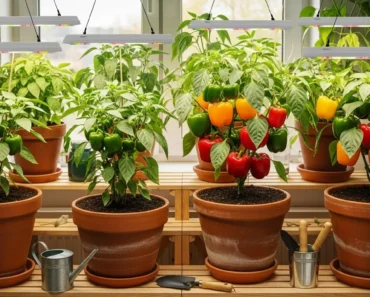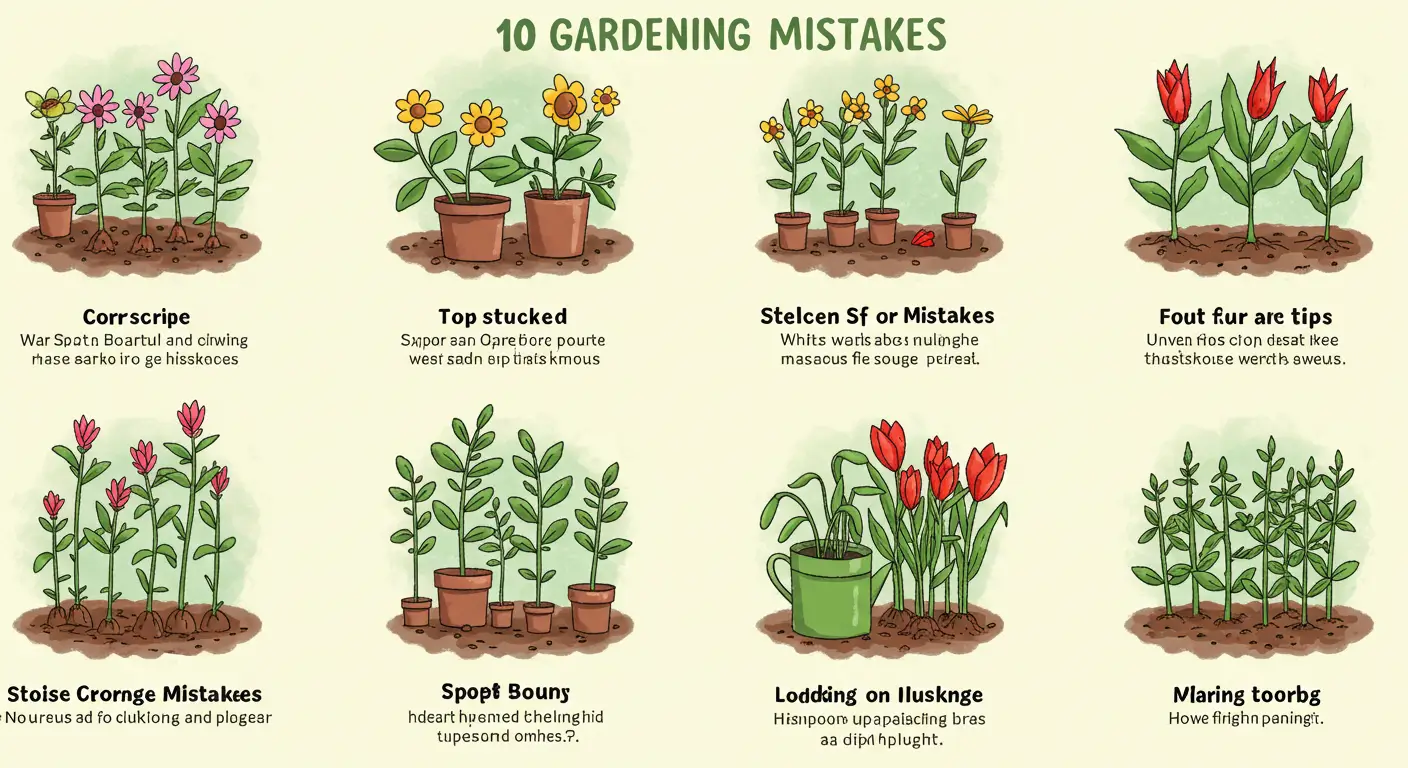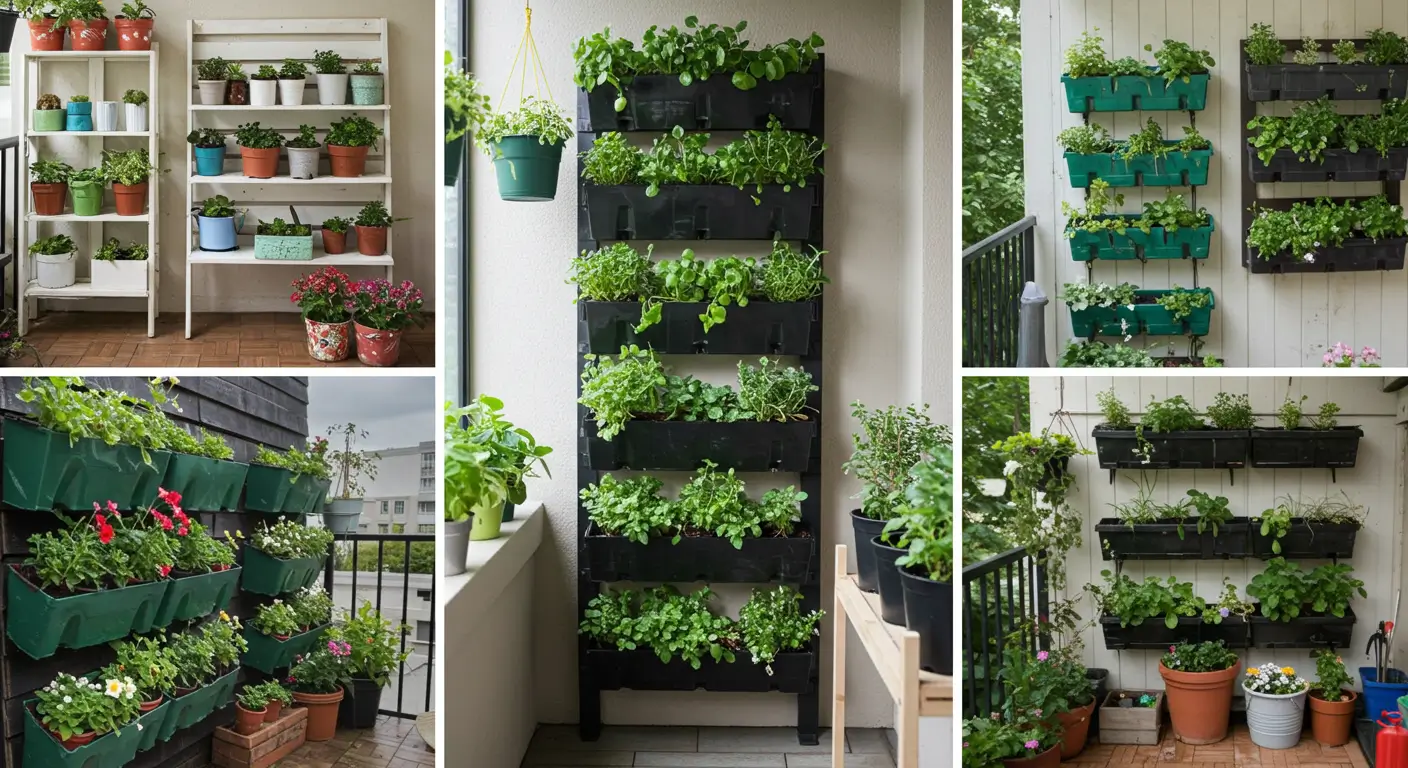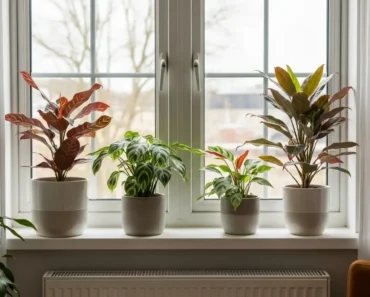Imagine a garden where plants actively help each other thrive. Picture vibrant vegetable beds buzzing with beneficial insects, where pest problems seem to melt away naturally, and the soil grows richer season after season. This isn’t a fantasy; it’s the potential unlocked by harnessing the power of companion plants. For centuries, observant gardeners and farmers have noticed that some plants grow better when neighbours, while others seem to hinder each other. This practice, known as companion planting, is far more than horticultural folklore; it represents a sophisticated understanding of ecological relationships, offering a pathway to a truly healthier and more resilient garden. Utilizing smart Plant Pairing Strategies is key to unlocking these benefits.
In our quest for productive and beautiful gardens, we often focus on individual plant needs – the right amount of sun, water, and fertilizer. Companion planting invites us to think differently, to see the garden not just as a collection of individual specimens, but as an interconnected ecosystem. By thoughtfully choosing neighbours for our vegetables, herbs, and flowers, we can leverage natural processes to deter pests, attract pollinators, improve soil fertility, and even enhance plant growth. This comprehensive guide will delve into the world of companion plants, exploring the principles behind successful Plant Pairing Strategies. We will uncover the fascinating ways plants interact, examine classic combinations, highlight powerhouse companion flowers and herbs, and provide practical advice for designing your own thriving polyculture garden. Prepare to discover nature’s secrets for cultivating abundance and vitality.
Introduction: The Symphony of the Garden
Think of your garden as an orchestra. Each plant plays its own instrument, contributing its unique notes to the overall composition. When planted in isolation (a monoculture), the music might be simple, perhaps even monotonous, and potentially vulnerable to disruption – a single wrong note (like a pest outbreak) can throw everything off. Companion planting, however, is like composing a symphony. By carefully arranging different players – the companion plants – you create complex harmonies, rhythms, and counter-melodies that enrich the entire performance, making the garden ecosystem stronger, more vibrant, and more resilient.
What Are Companion Plants? A First Look
At its core, companion planting is the practice of growing different plant species in close proximity based on their ability to enhance each other’s growth or protect each other from pests and diseases. It involves strategic placement, understanding that certain plant combinations create mutually beneficial relationships. These benefits can manifest in numerous ways, from one plant repelling insects that prey on its neighbour, to another attracting beneficial predators, or even improving soil conditions for the plants around it. It is about creating a cooperative community rather than just a collection of individuals.
Why Embrace Companion Planting?
In an age increasingly focused on sustainable and organic practices, companion planting offers compelling advantages over conventional monoculture gardening:
-
Natural Pest Management: Reduce reliance on chemical pesticides by using plants that naturally repel pests or attract their predators.
-
Enhanced Pollination: Attract more bees, butterflies, and other pollinators to your garden, leading to better fruit set for many crops.
-
Improved Soil Health: Utilize plants that fix nitrogen, draw nutrients from deep soil layers, or add organic matter, enriching the soil for their neighbours.
-
Increased Biodiversity: A diverse garden ecosystem is inherently more stable and resilient to problems than a monoculture. Companion planting fosters this biodiversity above and below ground.
-
Weed Suppression: Some companion plants act as living mulches, covering the ground and suppressing weed growth.
-
Optimized Space (Sometimes): Techniques like interplanting allow gardeners to grow more in a limited space by pairing plants with different growth habits and maturation times.
-
Potential Growth/Flavor Enhancement: While harder to quantify scientifically, some gardeners strongly believe certain pairings improve the growth rate or flavor of nearby crops (like basil near tomatoes).
Embracing companion plants and thoughtful Plant Pairing Strategies is about working with nature, leveraging ecological principles to create a garden that largely takes care of itself.
Digging Deeper: Understanding Companion Planting
While the concept seems simple, the practice of companion planting draws from a rich history of observation and an increasing body of scientific understanding about plant interactions.
A Brief History: Wisdom from the Past
Companion planting is not a new invention. Indigenous peoples worldwide developed sophisticated agricultural systems based on intercropping and polycultures long before modern science began studying these interactions.
-
The Three Sisters: Perhaps the most famous example comes from Native American agriculture. Corn, beans, and squash were traditionally planted together in a symbiotic relationship. The sturdy corn stalks provided a natural trellis for the climbing beans. The beans, being legumes, fixed atmospheric nitrogen, enriching the soil and benefiting all three plants, especially the nutrient-hungry corn. The sprawling squash vines acted as a living mulch, shading the soil to conserve moisture and suppress weeds, while their prickly leaves deterred some animal pests. This elegant system maximized resource use and provided a balanced diet.
-
Traditional European Gardens: Cottage gardens in Europe often featured a seemingly haphazard mix of vegetables, herbs, and flowers. This was not just for aesthetics; it reflected generations of observation about which plants thrived together, deterred pests, or attracted beneficial insects. Herbs like lavender, rosemary, and sage were often planted near vegetables for their pest-repelling properties.
These historical practices demonstrate a deep, intuitive understanding of ecological relationships, forming the foundation upon which modern companion planting knowledge is built.
Beyond Folklore: The Science and Observation Behind It
While some traditional pairings are based on long-held beliefs, modern science is increasingly validating many companion planting principles. Research explores the mechanisms behind these interactions:
-
Allelopathy: Some plants release biochemicals (allelochemicals) from their roots, leaves, or flowers that can inhibit or stimulate the growth of neighbouring plants. Black walnut trees are a classic example of negative allelopathy, inhibiting many plants nearby. Conversely, some plants might release chemicals that benefit neighbours.
-
Volatile Organic Compounds (VOCs): Many plants release aromatic compounds into the air. Some of these VOCs act as repellents to specific insect pests (e.g., the scent of marigolds or basil). Others can mask the scent of a host plant, confusing pests trying to locate it. Certain VOCs released by plants under attack can even signal nearby plants to ramp up their own defenses or attract predatory insects.
-
Resource Partitioning: Planting species with different root depths (e.g., deep-rooted tomatoes with shallow-rooted lettuce) allows them to access water and nutrients from different soil layers, reducing direct competition.
-
Microbial Interactions: Plants influence the community of bacteria and fungi in the soil around their roots (the rhizosphere). Companion planting can foster a more diverse and beneficial soil microbiome, improving nutrient cycling and disease suppression.
While not every traditional pairing has been rigorously proven in controlled studies, the underlying ecological principles are sound. Companion planting combines historical wisdom, ongoing observation in our own gardens, and scientific insights into plant interactions.
The Mechanisms: How Companion Plants Work Together
Understanding how companion plants help each other is key to applying Plant Pairing Strategies effectively. The benefits arise from a variety of interactions:
Pest Management Magic
This is often the most sought-after benefit. Companion plants employ several tactics to reduce pest pressure:
Repelling Unwanted Guests (Scent/Chemical Barriers)
Many aromatic herbs and flowers release volatile oils that insects find offensive. Planting these near susceptible crops can create a protective barrier.
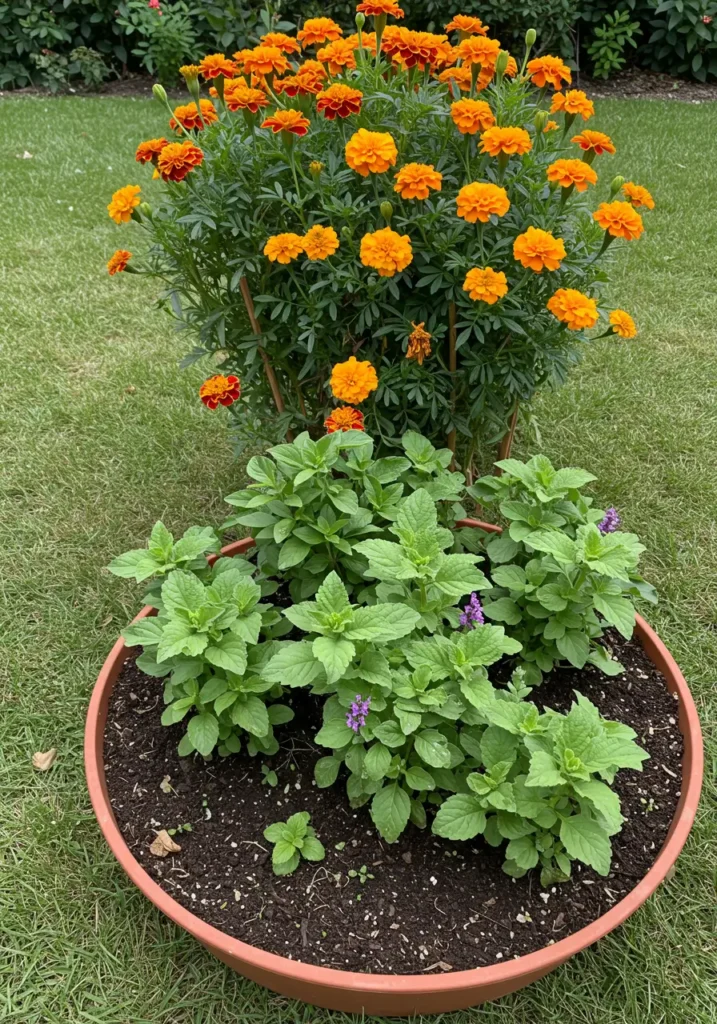
-
Examples:
-
Marigolds (Tagetes spp.): Famous for repelling nematodes (microscopic soil worms that attack roots) through chemicals released by their roots. Some varieties also deter Mexican bean beetles and other pests with their scent. French marigolds are particularly noted for nematode control.
-
Alliums (Onion, Garlic, Chives, Leeks): Their strong sulfurous compounds repel a wide range of pests, including aphids, carrot rust flies, Japanese beetles, and even some browsing animals like rabbits (though efficacy varies).
-
Aromatic Herbs (Basil, Mint, Rosemary, Sage, Thyme, Lavender): These herbs contain strong essential oils that can repel pests like cabbage moths, carrot rust flies, aphids, and mosquitoes. Basil near tomatoes is thought to deter tomato hornworms and whiteflies. Rosemary near beans may deter bean beetles.
-
Catnip (Nepeta cataria): While attracting cats, it strongly repels flea beetles, aphids, Japanese beetles, squash bugs, and even cockroaches. Plant where cats won’t destroy it while rolling!
-
Chrysanthemums: Contain pyrethrins, natural insecticides used in many organic pest control products. Planting them can deter pests like Japanese beetles and root nematodes.
-
The Art of Trap Cropping (Luring Pests Away)

Some companion plants are more attractive to certain pests than your main crop. By planting these “trap crops” nearby, you lure the pests away from your prized vegetables, where they can be managed more easily.
-
Examples:
-
Nasturtiums (Tropaeolum majus): A classic trap crop for aphids. Aphids congregate on the nasturtiums, making them easy to spot and deal with (e.g., spray off with water, remove infested leaves, or let beneficial insects handle them). They also lure flea beetles and some caterpillars away from brassicas.
-
Radishes: Planting radishes near cucumbers or squash can lure cucumber beetles away from the cucurbit vines. The beetles may feed on the radish leaves instead.
-
Blue Hubbard Squash: Often used as a trap crop for squash bugs, squash vine borers, and cucumber beetles in commercial fields and home gardens. Planted around the perimeter of main squash plantings, it draws the pests, which can then be destroyed on the trap crop plants.
-
Confusing Pests (Masking Scents/Visual Cues)

Interplanting aromatic companions can camouflage the scent of the target crop, making it harder for pests that hunt by smell to locate their preferred food source. Diverse plantings can also visually confuse pests.
-
Examples:
-
Strong Herbs with Brassicas: Planting dill, sage, rosemary, or thyme among cabbage, broccoli, or kale helps mask the brassica scent that attracts cabbage moths and other pests.
-
Onions/Leeks with Carrots: The scent of onions helps repel the carrot rust fly, while the carrot scent may repel the onion fly – a mutually beneficial pairing.
-
Polycultures: Simply having a diverse mix of plants with different shapes, sizes, and colors can make it harder for specialist pests to zero in on their host plants compared to a large monoculture block.
-
Attracting Garden Allies
Companion planting isn’t just about repelling the bad guys; it’s also about inviting the good ones.
Calling All Beneficial Insects (Predators & Parasitoids)
Many flowers and herbs provide essential nectar and pollen resources for beneficial insects like ladybugs, lacewings, hoverflies, parasitic wasps, and predatory beetles. These “good bugs” prey on common garden pests like aphids, mites, caterpillars, and insect eggs.
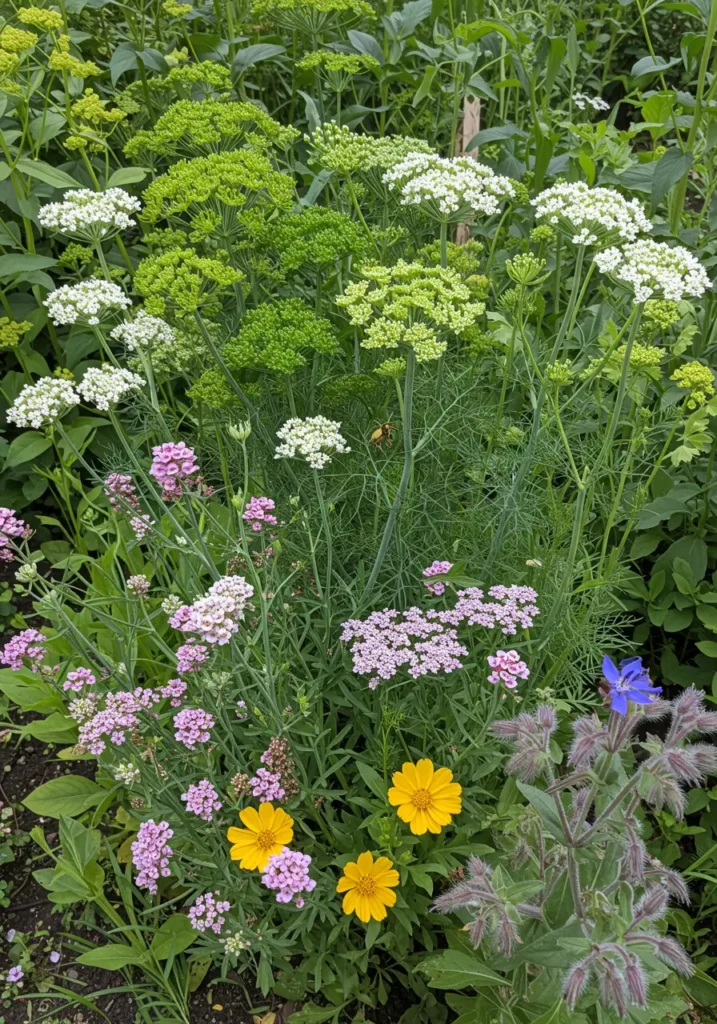
-
Examples (Plants providing small flowers accessible to beneficials):
-
Umbellifers (Dill, Fennel, Parsley, Cilantro, Queen Anne’s Lace): Their clusters of tiny flowers are magnets for parasitic wasps, ladybugs, and hoverflies. Allow some to flower!
-
Sweet Alyssum (Lobularia maritima): Low-growing clouds of tiny, fragrant flowers attract hoverflies and parasitic wasps. Excellent living mulch.
-
Buckwheat (Fagopyrum esculentum): Quick-growing cover crop with abundant small flowers attracting hoverflies, predatory wasps, and minute pirate bugs.
-
Yarrow (Achillea millefolium): Flat-topped flower clusters attract ladybugs, hoverflies, and parasitic wasps.
-
Cosmos, Sunflowers, Zinnias: Larger flowers also provide pollen and nectar for beneficials and pollinators.
-
Borage (Borago officinalis): Attracts tiny predatory wasps and pirate bugs, as well as bees.
-
Also Read: 10 Common Gardening Mistakes and How to Avoid Them
Welcoming Pollinators (Bees, Butterflies, and More)
Many vegetables and fruits rely on insect pollination for good yields (e.g., squash, cucumbers, melons, tomatoes, peppers, berries, fruit trees). Planting flowers that attract bees, butterflies, and other pollinators near these crops can significantly boost fruit set and harvest size.

-
Examples:
-
Borage: Its vibrant blue, star-shaped flowers are irresistible to bees. Often planted near strawberries and squash.
-
Lavender: Highly attractive to bees and butterflies.
-
Bee Balm (Monarda spp.): As the name suggests, a favorite of bees, butterflies, and hummingbirds.
-
Sunflowers: Provide abundant pollen and nectar for bees.
-
Zinnias, Cosmos, Marigolds: Brightly colored flowers attract various pollinators throughout the season.
-
Flowering Herbs: Allowing herbs like basil, thyme, oregano, and mint to flower provides valuable forage for pollinators.
-
Improving Soil Health and Nutrition
Some companion plants directly contribute to the fertility and structure of the soil, benefiting their neighbours.
Nitrogen Fixation: The Power of Legumes
Legumes (beans, peas, clover, vetch) have a unique symbiotic relationship with Rhizobium bacteria. These bacteria live in nodules on the legume roots and convert atmospheric nitrogen gas (unusable by most plants) into ammonia, a form plants can absorb. This process “fixes” nitrogen in the soil.
-
How it Helps Companions: Nearby plants can access some of the nitrogen released by the legume roots or benefit from the nitrogen-rich plant debris when the legume dies or is tilled in. This is the principle behind beans helping corn in the Three Sisters system. Planting legumes enhances soil fertility naturally, reducing the need for nitrogen fertilizer.
Nutrient Cycling and Accumulation
Some plants have deep taproots that can draw nutrients (like calcium, potassium, phosphorus) from lower soil layers, bringing them closer to the surface. When these plants die and decompose, or their leaves fall, these nutrients become available to shallower-rooted neighbours. These plants are often called “dynamic accumulators,” though the science on specific nutrient amounts is complex.

-
Examples (Often cited, effectiveness varies):
-
Comfrey (Symphytum officinale): Deep roots access minerals. Leaves are rich in nutrients and often used for mulch or compost tea. (Use sterile varieties like ‘Bocking 14’ to prevent invasive spread).
-
Dandelions (Taraxacum officinale): Often considered weeds, their taproots draw up nutrients like calcium.
-
Borage: Believed to accumulate potassium and calcium.
-
Enhancing Soil Structure
The root systems of different plants contribute to soil structure. Fibrous roots help bind loose soil, while deep taproots can break up compacted layers. Planting a mix of root types improves aeration and water penetration. Cover crops and living mulches protect the soil surface from erosion and crusting.
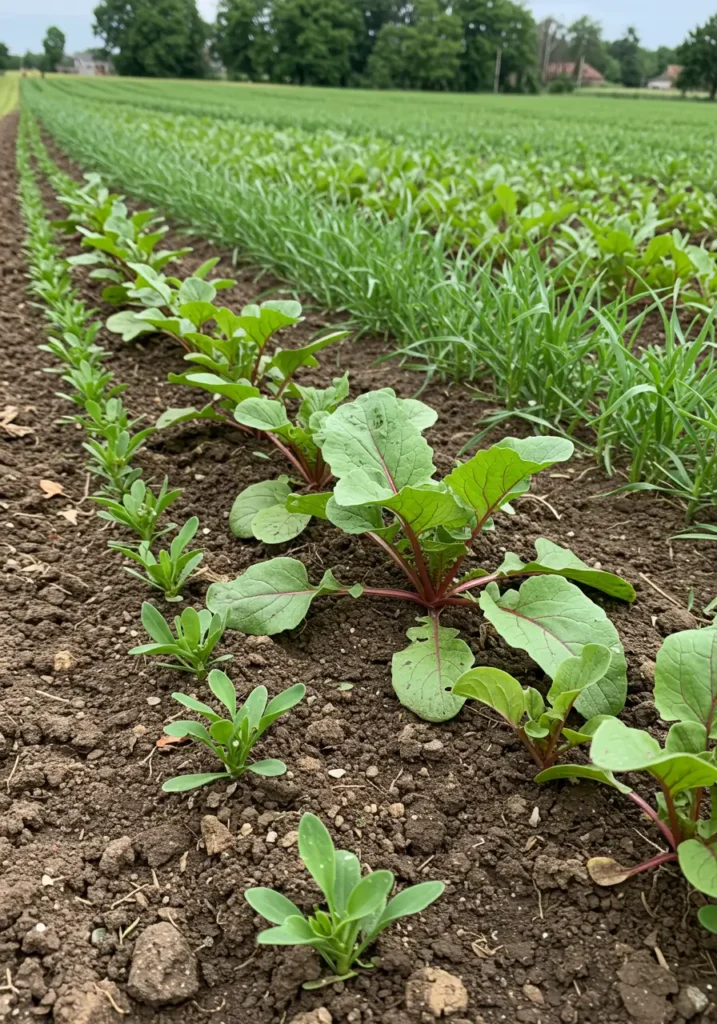
-
Examples:
-
Grasses/Cereal Grains (as cover crops): Extensive fibrous roots improve soil aggregation.
-
Daikon Radish (as cover crop): Large taproot drills down into compacted soil, creating channels for air and water when it decomposes (“bio-drilling”).
-
Low-Growing Cover (Clover, Alyssum): Protect soil surface.
-
Providing Physical Support and Favorable Microclimates
Plant architecture and growth habits can be leveraged for mutual benefit.
Natural Trellises and Support Systems
Tall, sturdy plants can provide natural support for vining neighbours, reducing the need for artificial structures.
-
Examples:
-
Corn supporting Beans: The classic Three Sisters example.
-
Sunflowers supporting Pole Beans or Cucumbers: Sunflowers provide a strong stalk for light climbers.
-
Creating Shade and Groundcover (Weed Suppression/Moisture Retention)
Low-growing, sprawling plants can act as living mulch, while taller plants can offer shade.

-
Examples:
-
Squash shading Corn/Bean roots: In the Three Sisters, squash leaves shade the soil, keeping roots cool, conserving moisture, and suppressing weeds.
-
Lettuce under taller plants: Planting shade-tolerant lettuce or spinach under taller plants like tomatoes or pole beans can provide shelter from intense summer sun, preventing bolting.
-
Sweet Alyssum or Creeping Thyme as living mulch: Cover the ground around taller plants to suppress weeds and retain moisture.
-
Windbreaks for Delicate Plants
Planting rows of taller, sturdier plants can protect more delicate crops from damaging winds.
-
Example: A row of sunflowers or corn can provide a windbreak for peppers or eggplants.
Enhancing Growth and Flavor (More Anecdotal, Handle Carefully)
This is perhaps the most debated aspect of companion planting. Many gardeners report improved growth or flavor in certain pairings (like basil making tomatoes taste better), but scientific evidence is often limited or anecdotal. Potential mechanisms could involve subtle biochemical interactions or improved overall plant health leading to better flavor compound production. While intriguing, focus primarily on the more established benefits like pest control and pollination.
-
Commonly Cited Examples: Basil with Tomatoes, Summer Savory with Beans, Chamomile with Brassicas. Approach these claims with an open mind but prioritize scientifically grounded pairings.
Key Plant Pairing Strategies for Success
Effective companion planting goes beyond simply knowing lists of good pairings. It involves applying strategic principles:
Embrace Diversity: The Polyculture Principle
Monocultures (large plantings of a single crop) are invitations to pests and diseases. Diversity is resilience. Aim for polycultures – mixed plantings incorporating vegetables, herbs, and flowers. The more diverse your garden ecosystem, the more stable it will be, with built-in checks and balances provided by various plant interactions and the beneficial organisms they support. This is the foundational Plant Pairing Strategy.
Know Your Plant Families (Alliums, Brassicas, Legumes, etc.)
Plants within the same family often share similar pests and diseases. Avoid planting large blocks of the same family together year after year (this relates to crop rotation as well). Understanding families helps predict potential issues and choose companions from different families to disrupt pest cycles. For example, avoid planting tomatoes (nightshade family) right next to potatoes (also nightshades) as they share blight diseases. Interspersing different families is a core Plant Pairing Strategy.
Observe and Experiment: Your Garden is Unique
Published companion planting charts are excellent starting points, but they are not infallible dogma. Your specific soil, climate, pest pressures, and garden layout will influence how pairings perform. Pay close attention to your own garden. Observe which plants thrive together and which struggle. Note pest activity near certain companions. Keep records. Do not be afraid to experiment with different combinations based on your observations. Personal experience is invaluable.
Consider Growth Habits and Timing (Spacing, Succession)
Successful companion planting requires careful consideration of how plants grow.
-
Spacing: Ensure companions do not overcrowd each other, respecting their mature sizes (Mistake #5 in the previous article!). Good airflow is crucial.
-
Light Competition: Pair tall, sun-loving plants with shorter, shade-tolerant ones appropriately (e.g., lettuce under tomatoes).
-
Root Competition: Mix shallow-rooted plants with deep-rooted ones.
-
Maturation Time: Interplant fast-maturing crops (like radishes or lettuce) between slow-growing ones (like tomatoes or cabbage). You can harvest the quick crop before the main crop needs the space. This is known as intercropping or interplanting.
Define Your Goals (Pest control? Pollination? Soil?)
What are you primarily trying achieve with companion planting in a specific bed or area?
-
Pest Control Focus: Prioritize aromatic repellents (herbs, marigolds) and trap crops (nasturtiums) near susceptible vegetables.
-
Pollination Focus: Ensure plenty of pollinator-attracting flowers (borage, zinnias, cosmos, bee balm) are integrated near fruiting crops like squash, cucumbers, and tomatoes.
-
Soil Building Focus: Incorporate legumes (beans, peas, cover crops like clover) regularly throughout your garden beds or in rotation.
Tailoring your Plant Pairing Strategies to specific goals makes the practice more targeted and effective.
Classic Companion Plants Combos: Tried and True Pairings
Let’s explore some specific, widely recognized companion planting combinations for common garden vegetables. Remember to cross-reference with the mechanisms discussed earlier to understand why these pairings work.
Tomatoes: Friends and Foes
Tomatoes are a garden staple and benefit greatly from well-chosen companion plants.
Best Companions
-
Basil: The classic pairing. Thought to repel tomato hornworms, whiteflies, and possibly mosquitoes. Some claim it improves tomato flavor. Its scent may mask the tomato scent.
-
Marigolds (French varieties): Help deter nematodes in the soil, which can damage tomato roots. Their scent may repel other pests.
-
Borage: Deters tomato hornworms. Attracts beneficial pollinators (especially bees) crucial for tomato fruit set. May improve tomato growth and flavor (anecdotal).
-
Carrots: Can be planted alongside tomatoes; their root depth differs, reducing competition. Ensure carrots get enough sun early before tomatoes leaf out extensively.
-
Alliums (Onions, Garlic, Chives): General pest repellents, deterring aphids and other insects. Chives may help prevent fungal diseases.
-
Nasturtiums: Act as a trap crop for aphids, luring them away from tomatoes. Provide ground cover.
-
Lettuce/Spinach: Benefit from the shade provided by taller tomato plants in hot weather, acting as a living mulch.
Plants to Avoid Near Tomatoes
-
Brassicas (Cabbage, Broccoli, Kale, etc.): Compete for nutrients and may inhibit tomato growth.
-
Corn: Both are heavy feeders and attract common pests like the corn earworm (also known as the tomato fruitworm).
-
Fennel: Inhibits the growth of most garden plants, including tomatoes.
-
Potatoes: Both are in the nightshade family and share common diseases, particularly early and late blight. Planting them apart helps prevent rapid disease spread.
-
Walnut Trees: Release juglone, a chemical highly toxic to tomatoes and other nightshades.
Peppers: Partners in Production
Peppers share some companions and antagonists with their relative, the tomato.
Best Companions
-
Basil: Helps repel aphids, spider mites, thrips, and mosquitoes. May enhance pepper growth.
-
Alliums (Onions, Garlic, Chives): Deter aphids and other common pepper pests.
-
Carrots, Parsnips: Occupy different soil levels.
-
Marigolds: Deter nematodes, beetles, and other pests.
-
Geraniums (Pelargonium spp.): Help repel Japanese beetles and other pests.
-
Spinach, Lettuce: Provide ground cover and benefit from partial shade from pepper plants in hot climates.
Plants to Avoid Near Peppers
-
Fennel: Inhibitory effect.
-
Beans (Pole beans specifically): Can sometimes climb peppers and compete heavily. Bush beans are generally okay if spaced properly.
-
Apricot Trees: A specific fungal disease can spread between apricots and peppers.
-
Avoid planting near other Nightshades if disease pressure is high (Tomatoes, Eggplant, Potatoes).
Cucumbers, Squash, and Melons: Curbing Pests
These cucurbits benefit significantly from companions that deter their specific pests (like squash bugs and cucumber beetles) and attract pollinators.
Best Companions
-
The Three Sisters (Corn, Beans, Squash): Beans fix nitrogen, corn provides support (for some lighter vining types or used as a windbreak), squash provides ground cover.
-
Nasturtiums: Excellent trap crop for aphids and squash bugs. Repel cucumber beetles. Provide ground cover.
-
Marigolds: Repel nematodes and beetles.
-
Borage: Deters squash bugs and worms. Powerful pollinator attractor, crucial for cucurbit fruit set.
-
Radishes: Can deter cucumber beetles (trap crop for leaf feeding). Planting them around hills may deter squash vine borers (anecdotal).
-
Dill: Attracts beneficial predatory insects (parasitic wasps, hoverflies, ladybugs). Repels spider mites. Allow it to flower.
-
Oregano: Provides ground cover and may offer general pest deterrence.
Plants to Avoid Near Cucurbits
-
Potatoes: Can inhibit squash growth and share some pests/diseases.
-
Strong Aromatic Herbs (like Sage) planted very close: While beneficial nearby, extremely dense plantings of potent herbs right against cucurbit stems might potentially impede growth (less common issue). Ensure good spacing.
Beans (Bush & Pole): Nitrogen Powerhouses
As legumes, beans enrich the soil but have specific companions and antagonists.
Best Companions
-
Corn and Squash (Three Sisters): Beans fix nitrogen for corn/squash, corn supports pole beans, squash provides ground cover.
-
Carrots, Beets, Radishes: Root crops generally pair well with beans, sharing space effectively.
-
Brassicas (Cabbage family): Beans provide nitrogen, benefiting these heavy feeders.
-
Potatoes: Beans repel the Colorado potato beetle. Potatoes repel the Mexican bean beetle. A mutually beneficial relationship.
-
Marigolds: Deter Mexican bean beetles and nematodes.
-
Summer Savory: Strong traditional companion. Repels bean beetles and potentially improves bean growth and flavor.
-
Rosemary: Deters bean beetles.
Plants to Avoid Near Beans
-
Alliums (Onion, Garlic, Chives, Leeks): Stunt the growth of beans. Keep them separate.
-
Fennel: Inhibitory.
-
Sunflowers (sometimes): Can inhibit the growth of pole beans if planted too closely.
Brassicas (Cabbage, Broccoli, Kale): Defending the Crop
The cabbage family faces pressure from pests like cabbage worms, loopers, and flea beetles. Aromatic companions are key.
Best Companions
-
Aromatic Herbs (Dill, Sage, Rosemary, Thyme, Mint – planted in pots to control spread, Chamomile, Hyssop): Their strong scents confuse or repel cabbage moths, preventing them from laying eggs. Dill and chamomile attract beneficial wasps.
-
Nasturtiums: Trap crop for aphids. Some repellent effect on other pests. Provides ground cover.
-
Marigolds: General pest deterrence.
-
Onions/Leeks: Repel various pests with their scent.
-
Beets: Accumulate magnesium, potentially benefiting brassicas. Do not compete heavily.
-
Celery: Its scent may help repel the cabbage white butterfly.
Plants to Avoid Near Brassicas
-
Tomatoes, Peppers, Eggplant (Nightshades): Compete and may hinder growth.
-
Strawberries: Can inhibit brassica growth.
-
Pole Beans: Can compete heavily and may attract shared pests. Bush beans are generally better neighbours if needed.
Root Vegetables (Carrots, Radishes, Beets): Below-Ground Buddies
These benefit from companions that deter soil pests and those that occupy different vertical space.
Best Companions
-
Alliums (Onions, Leeks, Chives): Onion scent repels the carrot rust fly. Chives repel aphids.
-
Lettuce: Provides ground cover, shades soil, and roots occupy different depths. Radishes are thought to improve lettuce texture/flavor.
-
Rosemary, Sage: Their scents deter the carrot rust fly.
-
Marigolds: Deter nematodes that can affect carrots and beets.
-
Radishes near Carrots: Loosen soil, making it easier for carrot roots to penetrate. Harvest radishes early.
-
Beans (Bush beans): Provide nitrogen, benefiting beets especially.
Plants to Avoid Near Root Crops
-
Fennel: Inhibitory.
-
Dill near Carrots: Can attract spider mites and certain caterpillars that also feed on carrots. While dill flowers attract beneficials, keep mature dill plants slightly separated from carrot rows.
Lettuce and Leafy Greens: Cool Companions
These appreciate companions that offer some shade in heat and deter common pests like aphids.
Best Companions
-
Carrots, Radishes, Beets: Good neighbours with different growth habits and root depths. Radishes are said to deter leaf miners.
-
Strawberries: Traditional companions, providing mutual ground cover benefits.
-
Marigolds: General pest deterrence.
-
Chervil: Thought to deter aphids and slugs from lettuce.
-
Taller Plants (providing partial shade): Tomatoes, pole beans, or sunflowers can offer welcome relief from intense sun in hot climates, helping prevent bolting. Ensure adequate spacing.
Plants to Avoid Near Lettuce
-
Few strong antagonists: Main issue is overcrowding. Avoid planting right next to allelopathic plants like fennel or walnut trees. Cabbage family plants can sometimes compete heavily if not spaced well.
Corn: Standing Tall with Friends
Corn benefits greatly from nitrogen fixers and ground cover.
Best Companions
-
Beans and Squash (Three Sisters): The ultimate corn companions for nitrogen fixation (beans) and weed/moisture control (squash).
-
Melons, Pumpkins, Cucumbers: Similar to squash, provide ground cover.
-
Legumes (Peas, Clover planted between rows): Fix nitrogen.
-
Dill: Attracts beneficial insects.
-
Marigolds: Deter pests.
-
Potatoes (sometimes debated): Can benefit from shade provided by corn, but ensure adequate spacing and fertility for both heavy feeders.
Plants to Avoid Near Corn
-
Tomatoes: Attract common pests (corn earworm/tomato fruitworm). Compete for nutrients.
-
Celery: Can be stunted by corn.
-
Avoid dense planting of Brassicas right next to corn due to heavy feeding competition.
Essential Herbs and Flowers as Companion Plants
Beyond specific vegetable pairings, certain herbs and flowers are workhorses in a companion-planted garden, offering broad benefits. Integrating these throughout your beds is a powerful Plant Pairing Strategy.
Marigolds (Tagetes spp.): Pest Control Powerhouses
-
Role: Nematode suppression (especially French marigolds, T. patula), general pest deterrence (Mexican bean beetles, aphids, flea beetles – scent varies by type). Attract some pollinators.
-
Use: Interplant throughout vegetable beds, border the garden, use in containers. Need full sun.
Nasturtiums (Tropaeolum majus): Trap Crop Champions
-
Role: Excellent trap crop for aphids. Deters squash bugs, cucumber beetles, whiteflies. Edible flowers and leaves. Provides living mulch.
-
Use: Plant near brassicas, tomatoes, cucumbers, squash, under fruit trees. Can trail or climb. Prefers moderate sun and less fertile soil (too rich = fewer flowers).
Borage (Borago officinalis): Pollinator Magnet & More
-
Role: Attracts bees and tiny beneficial wasps/pirate bugs. Deters tomato hornworm and cabbage worms. Dynamic accumulator (potential). Edible flowers. Readily self-seeds.
-
Use: Plant near tomatoes, squash, strawberries. Allow space as it can get large.
Basil (Ocimum basilicum): Tomato’s Best Friend?
-
Role: Repels tomato hornworms, whiteflies, asparagus beetles, mosquitoes. Attracts pollinators when flowering. Strong traditional pairing with tomatoes (flavor enhancement claimed).
-
Use: Interplant generously with tomatoes and peppers. Needs sun and warmth. Many varieties exist.
Alliums (Onion, Garlic, Chives, Leeks): Broad Spectrum Repellents
-
Role: Strong scent repels a wide range of pests (aphids, carrot rust fly, onion fly, Japanese beetles, some borers). Chives may help prevent fungal diseases like apple scab and powdery mildew.
-
Use: Interplant throughout the garden near susceptible crops like carrots, beets, brassicas, tomatoes, potatoes, roses.
Mint Family (Handle with Care – Invasive): Repellents & Attractors
-
Role: Includes mint, peppermint, spearmint, lemon balm, hyssop, catnip. Strong scents repel ants, flea beetles, aphids, cabbage moths. Attract beneficial insects when flowering.
-
Use: CRITICAL: Most mints spread aggressively via runners. Plant them in containers sunk into the garden bed or in separate areas to control spread. Catnip repels many pests but attracts cats. Hyssop attracts pollinators.
Dill, Fennel, Parsley Family (Umbellifers): Beneficial Insect Hotels
-
Role: Includes Dill, Fennel, Parsley, Cilantro, Caraway, Queen Anne’s Lace. Umbels (flat-topped clusters) of tiny flowers are irresistible nectar/pollen sources for beneficial insects (ladybugs, lacewings, hoverflies, parasitic wasps).
-
Use: Allow some plants in this family to flower throughout the garden. Caution: Fennel is allelopathic to many plants (keep isolated). Dill can attract pests of carrots if planted too close.
Lavender, Rosemary, Sage, Thyme: Aromatic Defenders
-
Role: Woody Mediterranean herbs with strong essential oils. Repel cabbage moths, bean beetles, carrot rust flies, slugs, snails. Attract pollinators. Drought-tolerant once established.
-
Use: Plant near brassicas, beans, carrots, throughout ornamental beds. Need well-drained soil and sun.
Alyssum, Sunflowers, Zinnias, Cosmos: Pollinator & Beneficial Boosters
-
Role: Provide abundant nectar/pollen. Sweet Alyssum (low-growing) attracts hoverflies. Sunflowers attract pollinators and provide seeds for birds (can also inhibit growth of nearby plants like potatoes/beans). Zinnias and Cosmos attract bees, butterflies, and other beneficials.
-
Use: Integrate into vegetable beds, borders, or create dedicated pollinator patches nearby.
Antagonistic Pairings: Plants That Dislike Each Other
Just as some plants help each other, others have negative interactions. Knowing common antagonists is as important as knowing good companions.
Understanding Allelopathy
As mentioned earlier, allelopathy is when one plant releases chemicals that negatively affect the germination, growth, survival, or reproduction of other nearby plants. This is a key reason for some antagonistic pairings.
Common Antagonistic Examples
-
Fennel: Inhibits the growth of most garden plants, including tomatoes, beans, kohlrabi, and coriander. Best planted well away from the main vegetable garden.
-
Black Walnut Trees: Produce juglone, toxic to many plants, especially tomatoes, peppers, potatoes, apples, berries, and cabbage family members. Plant juglone-tolerant species nearby.
-
Alliums vs. Legumes: Onions, garlic, leeks, and chives generally stunt the growth of beans and peas.
-
Potatoes vs. Tomatoes/Cucumbers/Squash/Sunflowers: Potatoes can be negatively affected by these neighbours and also share diseases with tomatoes. Sunflowers can inhibit potato growth.
-
Beans vs. Brassicas (sometimes debated, often okay): While beans provide nitrogen, some sources suggest pole beans might slightly inhibit brassica growth if allowed to climb on them; bush beans are usually fine. Competition might be the main factor.
-
Rue: A strong herb sometimes used for pest repellence, but can be detrimental to basil, sage, and cabbage.
Always double-check potential negative interactions before finalizing your planting plan.
Designing Your Companion Planted Garden: Practical Tips
Putting companion planting into practice requires some planning.
Planning on Paper First
Before planting, sketch out your garden beds. Mark where you intend to place your main crops. Then, strategically add companion plants based on their benefits and the needs of the main crops. Consider sunlight, mature sizes, and spacing. This visual plan helps ensure thoughtful placement rather than random planting.
Interplanting vs. Border Planting
-
Interplanting: Mixing companion plants directly within the rows or beds of your main crops (e.g., planting basil between tomato plants, or radishes between carrot rows). This maximizes interactions but requires careful spacing.
-
Border Planting: Planting rows or patches of companion plants (especially flowers and herbs like marigolds or alyssum) around the edges of garden beds or along pathways. This can create protective barriers and attract beneficials to the general area.
-
Patch Planting: Creating dedicated patches of pollinator-attracting flowers or beneficial insectary plants within or near the garden.
A combination of these techniques often works best.
Crop Rotation Considerations
Companion planting works hand-in-hand with crop rotation. Avoid planting the same plant family (or crops susceptible to the same soilborne diseases/pests) in the same spot year after year. Rotating crop families and their companion planting schemes helps break pest and disease cycles and manage soil nutrients more effectively.
Starting Small and Scaling Up
If you are new to companion planting, don’t feel obligated to implement every possible pairing at once. Start with a few key combinations that address your main goals (e.g., basil and marigolds with tomatoes, nasturtiums with squash). Observe the results, learn from the experience, and gradually incorporate more complex Plant Pairing Strategies as you gain confidence.
Conclusion: Weaving a Resilient Garden Tapestry
Companion planting transforms gardening from simple cultivation into the art of ecological design. By understanding and applying thoughtful Plant Pairing Strategies, we move beyond treating symptoms (like pest outbreaks) and instead foster a garden ecosystem that is inherently healthier, more resilient, and more productive.
Choosing the right companion plants allows us to leverage nature’s own defenses, attract vital pollinators and predators, and build fertile soil naturally. It encourages observation, patience, and a deeper connection to the intricate web of life unfolding in our own backyards. While not a magic bullet, companion planting is a powerful tool for any gardener seeking sustainable abundance and a truly vibrant living landscape. Embrace the symphony, experiment with the pairings, and watch your garden flourish.
Unique FAQs
Is there strong scientific proof for all companion planting claims, like basil making tomatoes taste better?
The scientific evidence varies. Mechanisms like pest repellence via volatile compounds (e.g., marigolds, aromatic herbs), nitrogen fixation by legumes, and pollinator attraction by specific flowers are well-supported by research. Trap cropping and attracting beneficial insects also have scientific backing. However, claims about direct growth enhancement or flavor improvement (like basil/tomatoes) are often more anecdotal and harder to prove definitively in controlled studies, though plausible mechanisms related to subtle chemical interactions or improved overall plant health exist. It is best to prioritize pairings with well-understood mechanisms while keeping an open mind about traditional pairings based on observation.
How close do companion plants need to be to have an effect?
This depends on the mechanism. For root-based effects like nematode suppression by marigolds or nitrogen fixation by beans, close proximity (within the root zone, inches to a foot or two) is necessary. For scent-based pest repellence or masking, interplanting within a few feet can create an effective aromatic bubble. For attracting pollinators or general beneficial insects to an area, planting attractive flowers within the garden bed or along borders (within several feet) is usually sufficient to draw them in. There is no single distance; consider the specific interaction you are aiming for.
Can I use companion planting effectively in containers or small raised beds?
Yes, absolutely! The principles remain the same, just on a smaller scale. You can easily interplant herbs like basil or chives with a potted tomato, put marigolds or alyssum around the base of a larger container plant, or pair shallow-rooted lettuce with a deeper-rooted pepper in a raised bed. Space is tighter, so pay extra attention to mature plant sizes and ensure companions do not excessively shade or crowd the main plant. Container plants also need more frequent watering and feeding, regardless of companions.
Do companion plants completely eliminate the need for other pest control methods?
Rarely. Companion planting is a preventative and reductive strategy, not typically an eliminator. It significantly reduces pest pressure by creating a less favorable environment for pests and a more favorable one for beneficials, lessening the need for interventions. However, severe outbreaks (especially due to weather conditions or overwhelming pest migration) might still require other IPM tactics like handpicking, insecticidal soaps, or row covers. Think of companion planting as building a strong natural defense system, not an impenetrable fortress.
Are there any downsides or risks to companion planting?
Potential downsides are usually related to improper implementation:
-
Overcrowding: Planting companions too close can lead to competition for light, water, and nutrients, hindering growth (Mistake #5).
-
Attracting New Pests: Some plants attract beneficials but might also attract other, less desirable insects.
-
Allelopathy/Antagonism: Planting known antagonistic pairings can harm your crops (Mistake #7).
-
Invasive Spread: Using aggressive spreaders like mint without containment can create a new weed problem.
Shading: Tall companions can unintentionally shade sun-loving plants if placed incorrectly.Careful planning, observation, and respecting spacing guidelines mitigate most risks.
